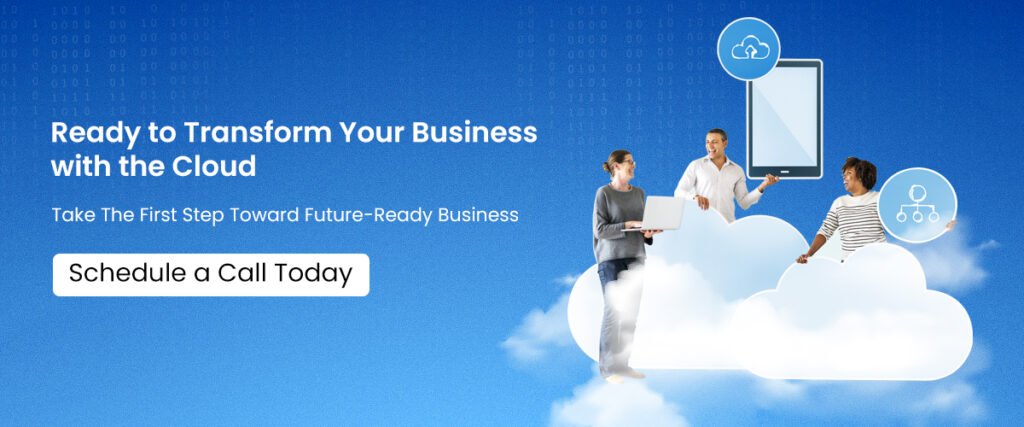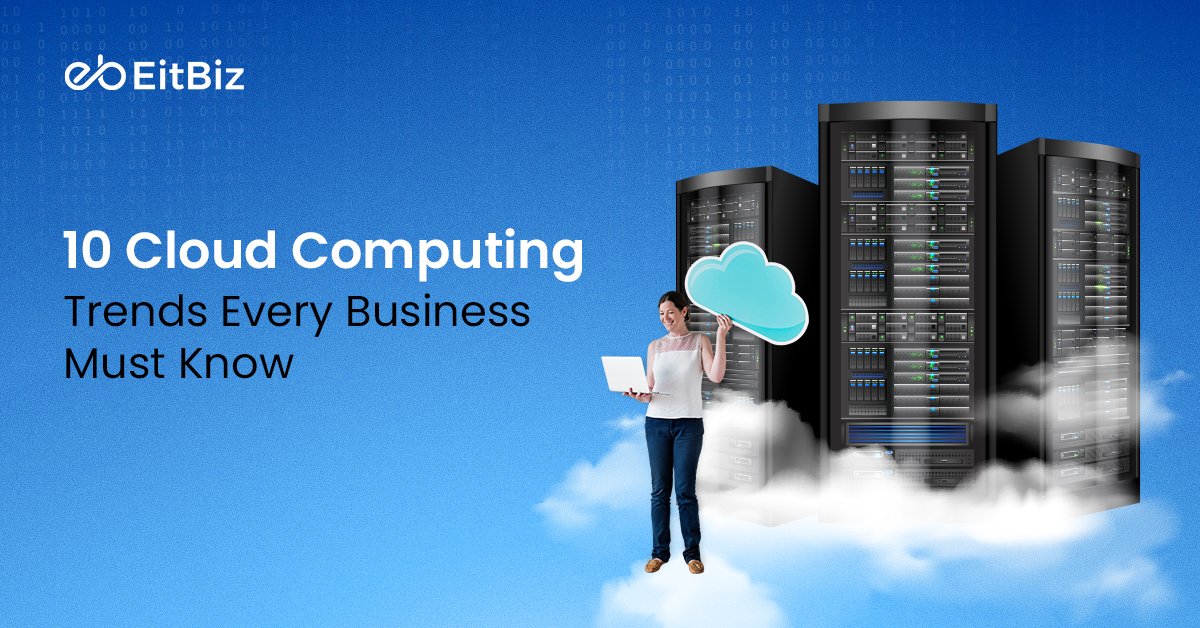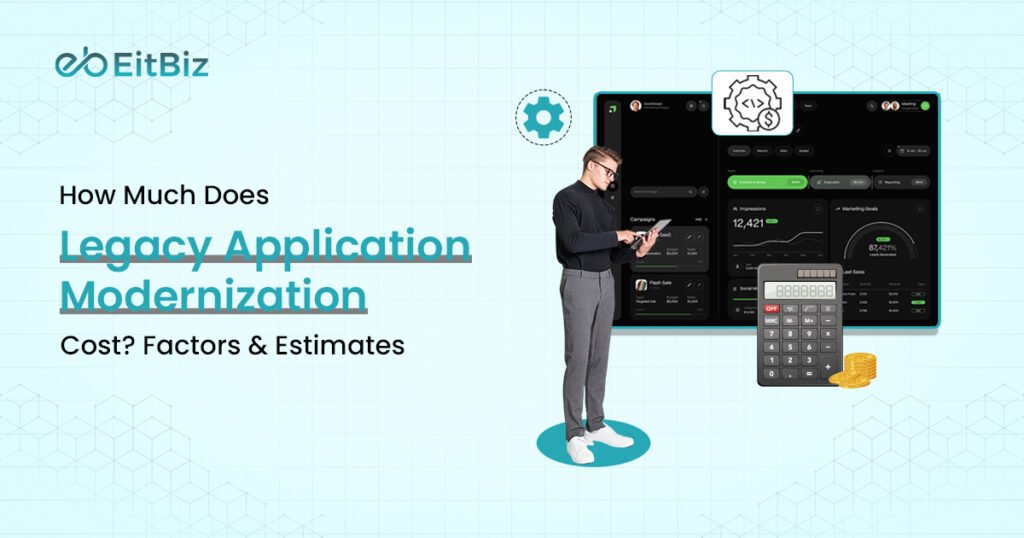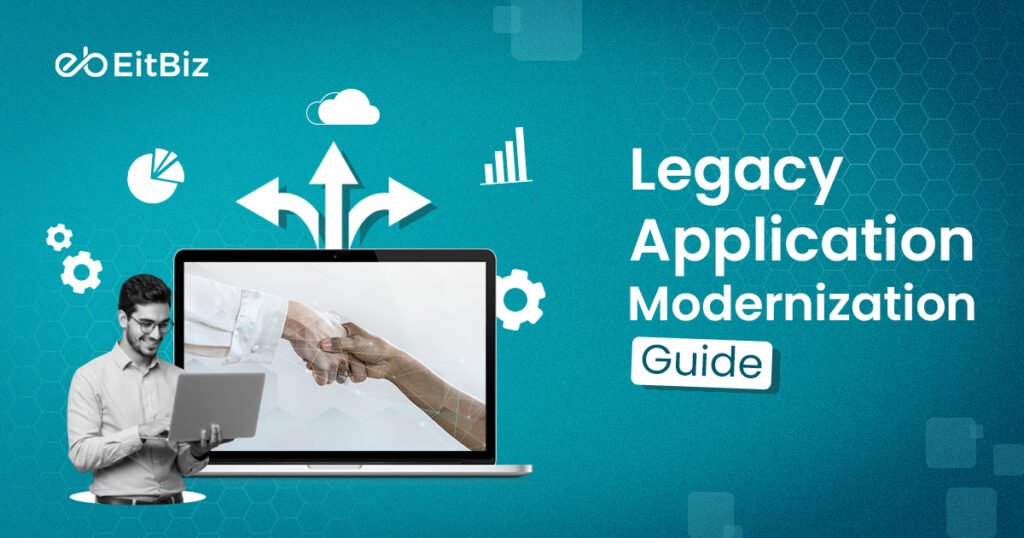It’s 2025!
Can you name any organization working without clouds, right?
Well, it’s pretty hard to imagine anyone, isn’t it?
Because the cloud offers a myriad of benefits like data backup, extensive storage, and data security, there’s no way businesses can afford to overlook it!
Did you know?
The global cloud computing market is all set to go beyond $2291.59 trillion by 2032, with a projected compound annual growth rate (CAGR) of 16.5%. (Source: Fortune Business Insights).
The future of cloud computing looks promising and is showing no signs of slowing down!
But now the question is: What are the top cloud computing trends to consider for your business in 2025?
Before we dive into that, let’s understand what it exactly means!
| Table Of Contents: 1. What is Cloud Computing? 2. What are the Top 10 Cloud Computing Trends Every Business Should Consider? 3. What are the Benefits of Cloud Computing Trends to Consider? Final Thoughts |
What is Cloud Computing?
To put it simply, cloud computing refers to the technology that offers computing services, including databases, servers, storage, and networking, through the internet. Furthermore, companies don’t need to invest in hefty machinery or IT infrastructure that can drain their savings in the long run. Instead, these cloud providers manage these services on a pay-as-you-go basis. All you need is simply an internet connection and a device, and you are all set to access the resources.
As a matter of fact, “Cloud computing enables businesses to use computing resources, instead of investing in robust internet infrastructure and data centers.”
What are the Top 10 Cloud Computing Trends Every Business Should Consider in 2025?
Here’s a list of the top 10 cloud computing trends your business can’t afford to overlook in 2025!
1. AI/ML Integration in Cloud Services
Artificial intelligence and machine learning are increasingly embedded within cloud platforms, enabling smarter workload management, predictive analytics, and automated operations. Businesses can leverage tools like SageMaker or Vertex AI to build scalable AI models, optimize performance, and reduce manual overhead. This trend is helping companies from all sectors evolve their DevOps, forecasting, and customer insights capabilities dramatically via intelligent automation.

2. Multi-Cloud and Hybrid Cloud Strategies
Organizations are increasingly adopting hybrid and multi-cloud architectures to enhance resilience and avoid vendor lock-in. By distributing workloads across private and public clouds, businesses can optimize costs, select best-fit services, and ensure disaster recovery readiness. Tools for cross-platform orchestration and unified dashboards make managing these environments more seamless. Gartner even suggests that hybrid/multi-cloud will be nearly universal by 2027.
3. Serverless and Cloud-Native Architectures
Serverless architectures, where infrastructure management is abstracted away, enable rapid development, automatic scaling, and a pay-as-you-go model. Coupled with cloud-native patterns like containers and microservices, businesses can deploy flexible, resilient, and portable applications. Combined, these approaches significantly accelerate innovation cycles while reducing operational complexity and costs.
4. Edge Computing and IoT Integration
Edge computing, which processes data closer to its source, is gaining momentum thanks to growing IoT deployments and demand for low-latency applications. By decentralizing data handling, companies can achieve faster response times and reduce bandwidth usage, a must for real-time contexts like smart manufacturing, autonomous vehicles, and healthcare monitoring. Gartner forecasts edge-generated enterprise data to reach 75% by 2025.
5. Cloud Security, Zero-Trust & Confidential Computing
As cloud footprints expand, security becomes paramount. Zero-Trust frameworks, where no entity is automatically trusted, combined with confidential computing (which protects data even during processing), are becoming standard. These solutions bolster data protection, regulatory compliance, and privacy, especially for sensitive workloads and multi-party analytics scenarios.
6. Sustainability and Green Cloud Initiatives
Environmental responsibility is now a strategic consideration. Cloud providers are investing heavily in energy-efficient data centers, carbon-neutral operations, and smart provisioning tools. Techniques like GreenOps, demand shaping, and carbon-aware computing are helping businesses reduce IT’s carbon footprint by as much as 30%–90% compared to traditional on-premises setups.
7. Industry-Specific Cloud Solutions (Vertical Clouds)
Vertical or industry clouds deliver tailored cloud systems built for specific sectors like finance, healthcare, or manufacturing. With pre-configured compliance models, integrated workflows, and domain-specific capabilities, businesses can accelerate deployment and lower customization costs, facilitating faster time-to-value in tightly regulated industries.
8. Quantum Computing via Cloud Platforms
Though still emerging, quantum computing is becoming more accessible through the cloud. Quantum-as-a-Service (QaaS) allows companies of all sizes to experiment with quantum algorithms in areas like encryption, simulation, and optimization without needing specialized hardware. Cloud providers are paving the way for widespread quantum experimentation and adoption.
9. Low-Code/No-Code and Citizen Development
Cloud-based low-code and no-code platforms empower non-developers to create apps, automations, and workflows visually. This democratization accelerates innovation, enables rapid solutions for internal needs, and helps compensate for developer shortages by fostering citizen developers across organizations. Expect enterprise-wide empowerment via drag-and-drop cloud application builders.
10. Automation, DevOps/DevSecOps & Disaster Recovery (DRaaS)
Automation is central to modern cloud adoption, from CI/CD pipelines and policy-driven governance to proactive DRaaS solutions. Automated deployments, real-time compliance checks, infrastructure orchestration, and robust backup strategies help streamline operations, reduce errors, enforce security, and ensure business continuity, even in disruptive scenarios.
What are the Benefits of Cloud Computing Trends to Consider in 2025?
Here are the potential reasons to invest in cloud computing trends to consider in 2025.
1. Cost Efficiency and Flexibility
Cloud computing eliminates the need for heavy upfront investment in physical hardware, data centers, and maintenance staff. Instead, businesses only pay for the resources they use, reducing wasted spending. The subscription or pay-as-you-go model allows companies to scale IT costs up or down depending on demand, ensuring flexibility in budgeting and long-term savings.
2. Scalability and Business Agility
With cloud platforms, organizations can easily scale resources such as storage, processing power, or applications in response to changing needs. Whether handling seasonal spikes in traffic or scaling back during quieter times, businesses gain agility and resilience. This adaptability helps enterprises remain competitive while optimizing performance without unnecessary infrastructure constraints.
3. Enhanced Collaboration and Accessibility
Cloud computing enables employees to access data, applications, and tools from anywhere with an internet connection. This enhances collaboration, especially for remote or global teams, as real-time file sharing and project tracking become seamless. It empowers businesses to embrace hybrid work models, improve productivity, and deliver faster results across distributed teams.
4. Strong Security and Compliance
Leading cloud providers invest heavily in advanced cybersecurity, offering features like data encryption, intrusion detection, identity access management, and multi-factor authentication. Additionally, compliance with industry regulations such as GDPR, HIPAA, or ISO standards is often built into these services. This provides enterprises with reliable, enterprise-grade security while reducing the burden of managing it in-house.
5. Business Continuity and Disaster Recovery
Cloud computing ensures data is backed up across multiple geographic regions, protecting organizations against downtime, data loss, or physical disasters. Disaster Recovery as a Service (DRaaS) options allow businesses to quickly restore operations and minimize disruptions. This level of reliability enhances customer trust and supports continuous business operations in any unexpected scenario.
Final Thoughts
Cloud computing in 2025 is not just a technological trend; it is a business imperative. From enabling AI-powered innovation and hybrid-cloud flexibility to driving sustainability, security, and industry-specific solutions, the cloud has become the backbone of modern digital transformation. Businesses that embrace these advancements will gain a competitive edge through agility, scalability, and resilience.
At EitBiz, we specialize in helping businesses harness the full potential of cloud computing. Whether you need cloud migration, secure infrastructure management, or custom cloud-native applications, our expert team ensures seamless adoption and measurable results.
Partner with EitBiz today to future-proof your business and stay ahead in the digital era.





